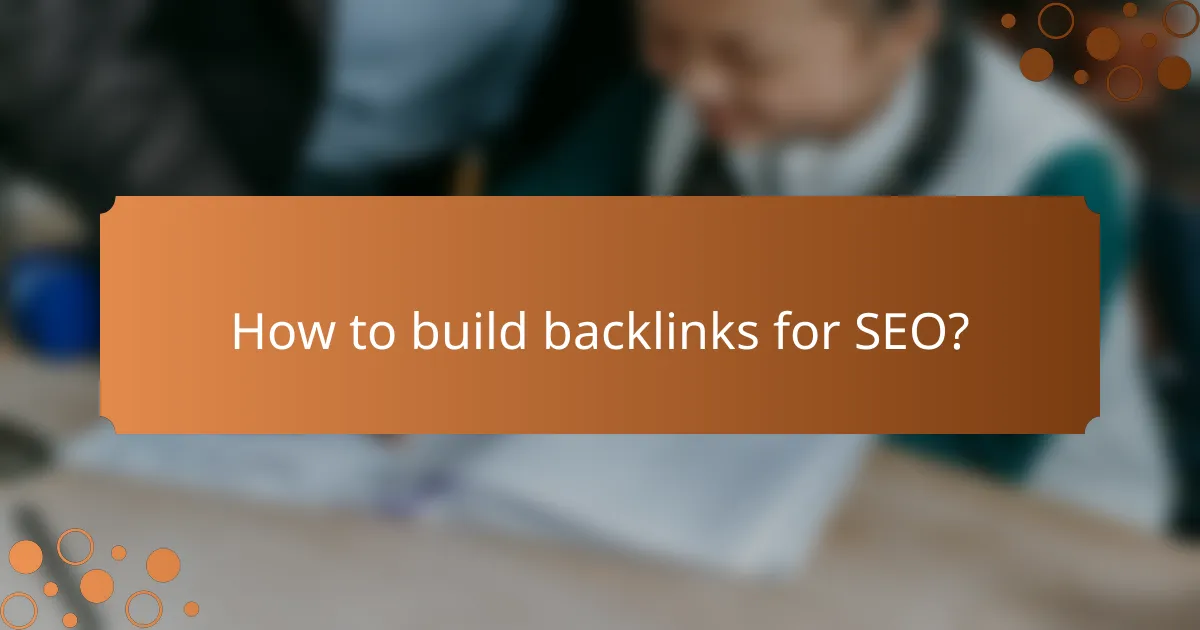Mastering SEO techniques is essential for boosting the visibility of digital products online. By focusing on keyword research, on-page optimization, and building backlinks, businesses can effectively enhance their search engine rankings and attract more traffic. These interconnected strategies not only improve content relevance but also drive potential customers to your offerings.

What are effective SEO techniques for digital products?
Effective SEO techniques for digital products include keyword research, on-page optimization, building backlinks, content marketing integration, and performance analytics. These strategies work together to enhance visibility and drive traffic to your digital offerings.
Keyword research tools like SEMrush
Keyword research tools such as SEMrush help identify the most relevant and high-traffic keywords for your digital products. By analyzing search volume, competition, and trends, these tools enable you to select keywords that align with user intent.
Utilizing these tools effectively involves focusing on long-tail keywords that are specific to your niche. This can lead to higher conversion rates as they often target users further along in the buying process.
On-page optimization strategies
On-page optimization involves enhancing individual web pages to rank higher and earn more relevant traffic. Key strategies include optimizing title tags, meta descriptions, headers, and ensuring keyword placement is natural and relevant.
Additionally, improving page load speed and mobile responsiveness are crucial for user experience and SEO ranking. Tools like Google PageSpeed Insights can help identify areas for improvement.
Building high-quality backlinks
Building high-quality backlinks is essential for improving domain authority and search engine rankings. Focus on acquiring links from reputable websites within your industry, as these carry more weight in search algorithms.
Strategies for obtaining backlinks include guest blogging, creating shareable content, and engaging in partnerships with influencers. Avoid low-quality link farms, as they can harm your SEO efforts.
Content marketing integration
Integrating content marketing with your SEO strategy enhances visibility and engagement. Create valuable, informative content that addresses your audience’s needs while incorporating targeted keywords naturally.
Consider using various formats such as blogs, videos, and infographics to reach a broader audience. Consistent content updates can also improve your site’s relevance and authority over time.
Analytics for performance tracking
Analytics tools are vital for tracking the performance of your SEO efforts. Google Analytics and similar platforms provide insights into traffic sources, user behavior, and conversion rates, allowing you to adjust strategies accordingly.
Regularly reviewing these metrics helps identify what works and what doesn’t, enabling you to refine your approach. Focus on key performance indicators (KPIs) like organic traffic growth and bounce rates to gauge success.

How to conduct keyword research?
Keyword research involves identifying the terms and phrases that potential customers use when searching for products or services. This process helps optimize your content and improve visibility in search engine results.
Using Google Keyword Planner
Google Keyword Planner is a free tool that helps you discover keywords related to your business. You can enter a few seed keywords, and the tool will generate a list of related keywords along with search volume data and competition levels.
To get started, create a Google Ads account if you don’t have one. Once logged in, navigate to the Keyword Planner tool, and choose “Discover new keywords.” This will allow you to explore various keyword ideas based on your input.
Analyzing competitor keywords
Analyzing competitor keywords involves examining the keywords that your competitors rank for in search engines. This can provide insights into effective keywords that you may want to target in your own content strategy.
Use tools like SEMrush or Ahrefs to input your competitor’s domain and see which keywords drive traffic to their site. Look for keywords with high search volume and relatively low competition, as these can be valuable targets for your SEO efforts.
Identifying long-tail keywords
Long-tail keywords are specific phrases that typically contain three or more words. They are less competitive than shorter keywords and often have higher conversion rates because they target users with specific intents.
To identify long-tail keywords, think about the specific questions or needs your audience may have. Tools like AnswerThePublic can help generate ideas based on common queries. Aim for keywords that reflect user intent, such as “best running shoes for flat feet” instead of just “running shoes.”

What are best practices for on-page optimization?
On-page optimization involves enhancing individual web pages to rank higher and earn more relevant traffic in search engines. Key practices include optimizing title tags, meta descriptions, header tags, and ensuring fast page load speeds.
Optimizing title tags and meta descriptions
Title tags and meta descriptions are crucial for on-page SEO as they directly influence click-through rates from search engine results. A well-crafted title tag should be concise, ideally between 50-60 characters, and include primary keywords relevant to the page content.
Meta descriptions should provide a compelling summary of the page, typically between 150-160 characters. Incorporating keywords naturally can improve visibility, but avoid keyword stuffing. Aim to create a clear call to action that encourages users to click through.
Using header tags effectively
Header tags (H1, H2, H3, etc.) structure content and help search engines understand the hierarchy of information on a page. The H1 tag should be used for the main title, while H2 and H3 tags can organize subsections, making content easier to read.
Include relevant keywords in header tags to improve SEO, but ensure they remain descriptive and user-friendly. A clear structure not only aids search engines but also enhances user experience, keeping visitors engaged longer.
Improving page load speed
Page load speed is a critical factor for both user experience and SEO rankings. Aim for a load time of under three seconds to reduce bounce rates. Tools like Google PageSpeed Insights can help identify areas for improvement.
To enhance load speed, optimize images, leverage browser caching, and minimize HTTP requests. Additionally, consider using a content delivery network (CDN) to distribute content more efficiently across different geographical locations.

How to build backlinks for SEO?
Building backlinks for SEO involves acquiring links from other websites that direct users to your site. High-quality backlinks enhance your site’s authority and improve its ranking in search engine results.
Guest blogging on reputable sites
Guest blogging is an effective way to build backlinks by writing articles for established websites in your niche. When you contribute valuable content, you often receive a link back to your site in return, which can drive traffic and improve your SEO.
To maximize the benefits, target reputable sites with a strong domain authority. Research their audience and tailor your content to meet their interests, ensuring that your posts are relevant and engaging.
Creating shareable infographics
Infographics are visually appealing and can be easily shared across social media platforms, making them a powerful tool for backlink generation. When you create informative and eye-catching infographics, other websites may link to your content as a resource.
To increase shareability, focus on unique data or insights that are not widely available. Promote your infographics through social media and outreach to bloggers who might find them useful for their own audiences.
Engaging in social media outreach
Social media outreach involves actively promoting your content on platforms like Facebook, Twitter, and LinkedIn. By sharing your articles and engaging with users, you can attract attention and encourage others to link back to your site.
Consider joining relevant groups or communities where you can share your expertise and content. Be genuine in your interactions, and avoid spamming; instead, focus on building relationships that can lead to valuable backlinks.

What criteria should be considered for SEO success?
SEO success can be evaluated through various criteria, including organic traffic growth, keyword ranking improvements, and overall engagement metrics. Focusing on these elements helps determine the effectiveness of your SEO strategies and guides future optimizations.
Measuring organic traffic growth
Organic traffic growth refers to the increase in visitors arriving at your website through search engine results without paid advertising. To measure this, use tools like Google Analytics to track the number of sessions and users over time, comparing different periods to identify trends.
A healthy growth rate typically ranges from 10% to 30% year-over-year, depending on your industry and competition. Regularly review your traffic sources to ensure that the majority comes from organic search, as this indicates effective SEO practices.
Assessing keyword ranking improvements
Keyword ranking improvements involve monitoring how well your website ranks for targeted keywords in search engine results. Tools like SEMrush or Ahrefs can help track these rankings over time, allowing you to see which keywords are gaining traction and which may need further optimization.
Focus on high-traffic keywords that are relevant to your content. A good practice is to aim for a position within the top 10 results for your primary keywords, as this significantly increases visibility and click-through rates. Regularly updating your content and optimizing on-page elements can help maintain or improve these rankings.
